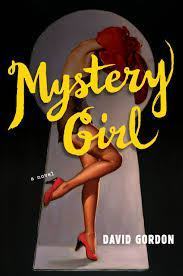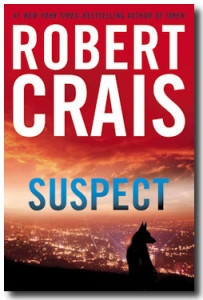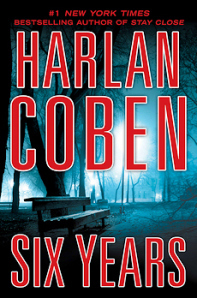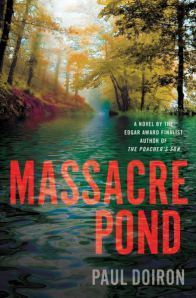Bruce DeSilva's Blog, page 34
February 6, 2014
My Mulligan Novels Are Cleverly Disguised Contemporary History, Right? Uh . . . No.
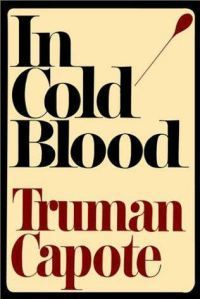 During the forty years I worked as a journalist, I was troubled by brilliant writers such as Truman Capote and Norman Mailer, who delighted in blurring the lines between faction and fiction. How is a reader supposed to know how much of In Cold Blood or The Executioner’s Song is literally true and how much was tweaked for the sake of the narrative?
During the forty years I worked as a journalist, I was troubled by brilliant writers such as Truman Capote and Norman Mailer, who delighted in blurring the lines between faction and fiction. How is a reader supposed to know how much of In Cold Blood or The Executioner’s Song is literally true and how much was tweaked for the sake of the narrative?
Now that I have abandoned journalism to write fiction, I find myself troubled by something else. Although the characters and plots of my first two crime novels sprang entirely from my imagination, this has not prevented some readers that suspecting each was a Roman à clef.
No, I tell them, the mayor in my Edgar Award-winning first novel, Rogue Island, is not a thinly-veiled depiction of former Providence Mayor Vincent A. Cianci. No, the attorney general in my second novel, Cliff Walk, is not my take on former Rhode Island Attorney General Arlene Violet. Aside from their titles, my characters and the real politicians are not at all alike.
Despite my protests, some readers continue to scrutinize my novels for hints about who I’m really writing about. In fact, two of my old journalism colleagues have convinced themselves that the protagonist in my novels, Liam Mulligan, an investigative reporter at a dying newspaper, is based on them. (The truth is, Mulligan, a guy with a smart mouth and a bad attitude toward authority, is more like me – except that he’s eight inches taller and 23 years younger.)
This experience made me resist the strong tug I felt to fictionalize a real case I once covered as a journalist—the story of Craig Price, the Warwick Slasher.
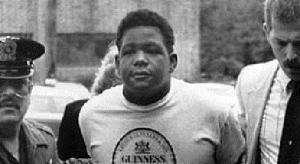 Price was 13 years old when he started killing young mothers and their female children in his suburban Rhode Island neighborhood–and just 15 when he was caught. He is one of the youngest serial killers in U.S. history, but that’s not the interesting part. When Price was arrested in the 1980s, Rhode Island’s juvenile justice statutes had not been updated in decades. When they were written, no one had ever envisioned a child like him, so the law required that all minors, regardless of their crimes, be released at age 21 and given a fresh start. Nevertheless, he remains behind bars to this day, convicted of committing a series of offenses behind bars.
Price was 13 years old when he started killing young mothers and their female children in his suburban Rhode Island neighborhood–and just 15 when he was caught. He is one of the youngest serial killers in U.S. history, but that’s not the interesting part. When Price was arrested in the 1980s, Rhode Island’s juvenile justice statutes had not been updated in decades. When they were written, no one had ever envisioned a child like him, so the law required that all minors, regardless of their crimes, be released at age 21 and given a fresh start. Nevertheless, he remains behind bars to this day, convicted of committing a series of offenses behind bars.
I have long suspected that some of these charges were fabricated, but in the very least, Price has been absurdly over-sentenced for them. For example, he was given an astounding 30 years for contempt for declining to submit to a court-ordered psychiatric examination. Have the authorities abused their power to prevent his release? I think so. And if they can get away with doing it to Price, they could do it to any of us. But should this killer be released and given the opportunity to prey on the innocent again? I don’t think so.
This ethical dilemma fascinates me. No matter which side of it you come down on, you are condoning something that is indefensible.
 Finally, I surrendered to the pull of the story and wrote Providence Rag, the third novel in my Mulligan crime series. Although the book was inspired by a true story, I fear that some readers will view it as slyly disguised contemporary history instead of fiction. It most assuredly is not.
Finally, I surrendered to the pull of the story and wrote Providence Rag, the third novel in my Mulligan crime series. Although the book was inspired by a true story, I fear that some readers will view it as slyly disguised contemporary history instead of fiction. It most assuredly is not.
In the novel, I invent an early childhood for the killer. I explore the roots of his obsession with murder, give him a love of reading, allow him to display a clever but chilling sense of humor, and provide him with a prison jargon-laced style of speaking. But I have never met Craig Price. I know nothing of his childhood. I don’t know how he talks. I don’t know what drove him to murder.
A few years ago, journalist Mark Arsenault (who now also writes crime novels) scored a series of jail-house interviews with Price for The Providence Journal. In them, the now middle-age black man said that he killed out of race rage, unable to contain his fury at insults from his white neighbors. I was disturbed by his attempt to cast aspersions on his victims. I never swallowed the explanation. I have my own theory of what drove him to murder, but I have no way of knowing for sure.
So the character in my novel is most emphatically not Craig Price. None of the other characters in the book – the police who investigated the case, the lawyers who prosecuted and represented him, the jailers who guarded him, and the journalists who covered the story–represent real people either.
As I wrote the novel, I could not resist using some details from the real case. For example, after his second attack, Price vomited in his victim’s backyard before making his escape. Robert Ressler, the retired FBI profiler credited with coining the term “serial killer,” told me Price did this not because he was sickened by the gore but because the attack left him as exhausted and dehydrated as a runner at the end of a marathon.
Of course, every novelist draws material from life and fashions it into something new. Still, I can’t help but worry that readers might mistake fiction for fact. That made Providence Rag a difficult book to write.
I think it is my best novel to date, but I doubt I will base a book on a real case again. Making stuff up is easier–and a lot less nerve-wracking.
Providence Rag goes on sale in hardcover and e-book editions on March 11 and will be available later as a downloadable audio book. It can already be ordered in advance here.
You can learn more about me and my work on my website.
A version of this article first appeared on my friend Michael Prager’s excellent blog, which you can find here.


January 28, 2014
“Providence Rag” Makes Publishers Weekly Top Ten
 Publishers Weekly, the bible of the publishing business, has just named my new Mulligan crime novel, Providence Rag, one of the top ten mysteries and thrillers of the spring season.
Publishers Weekly, the bible of the publishing business, has just named my new Mulligan crime novel, Providence Rag, one of the top ten mysteries and thrillers of the spring season.
Previously the magazine gave the novel a coveted STARRED review. The book also received a starred review in Booklist, a magazine that serves libraries and book clubs.
Providence Rag will be released on March 11 but is already available for pre-order here.


January 10, 2014
A Starred Review for “Providence Rag” in Publishers Weekly
 Publishers Weekly, the bible of the publishing business, has given a starred review to Providence Rag, the third crime novel in my hardboiled Mulligan series. The magazine, which also gave starred reviews to the first two novels in the series, said “Edgar-winner DeSilva melds moral dilemmas with a suspenseful plot in his third novel featuring Providence, R.I.–based reporter Liam Mulligan. His best yet.”
Publishers Weekly, the bible of the publishing business, has given a starred review to Providence Rag, the third crime novel in my hardboiled Mulligan series. The magazine, which also gave starred reviews to the first two novels in the series, said “Edgar-winner DeSilva melds moral dilemmas with a suspenseful plot in his third novel featuring Providence, R.I.–based reporter Liam Mulligan. His best yet.”
The review goes on to say, in part:”In 1992, when Mulligan is still handling the sports beat for the Providence Dispatch, an editor assigns him to help cover a gory double murder. Two years later, a similar crime claims three more lives—a mother and her two daughters, ages 8 and 12. Mulligan ends up cracking the case, but the main action concerns the fate of the convicted killer, who is due to be released after six years thanks to a legal fluke. When a colleague discovers that efforts to lengthen the incarceration may have been unethical, Mulligan must find a way to balance his passion for the truth with his desire to protect the public.”
Providence Rag will be published on March 11, but advance orders for both print and e-book editions can be placed here.


December 21, 2013
The Top Ten Crime Novels of 2013
It’s time, once again, for the annual list of the crime novels I most admired this year. Of course, I haven’t read everything, so I’m sure I missed some great work. Don’t hesitate to list your favorites in the comment section below.
I prefer hardboiled, noir, and literary crime fiction, so such books dominate my list. I’m not a big fan of espionage novels, I loathe cozies, and I refuse to read books in which crimes are solved by little old ladies, hairdressers, or cats.
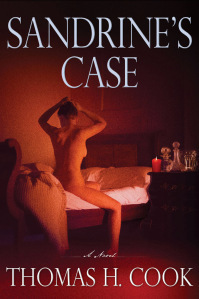 Sandrine’s Case
by Thomas H. Cook:
Sandrine’s Case
by Thomas H. Cook:
Cook, one of our finest literary crime novelists, writes disturbing, convoluted tales of families haunted by past acts of violence and betrayal that they don’t fully comprehend, either because important details have been hidden from them or because they have been deceiving themselves. He puts his characters into situations that compel them to reexamine the past, peeling it back layer by layer to discover the painful truth. Sandrine’s Case opens with Samuel Madison, a mediocre literature professor at a mediocre Georgia college, on trial for the murder of his brilliant and beautiful wife Sandrine. As witnesses parade to the stand to tell their stories to the jury, Madison, too, sits in judgment of his life, realizing that whether he killed Sandrine or not, he is most certainly guilty of something. The flashback-rich, intricately-plotted story is brilliantly structured, and the prose, as always in a Cook novel, is a thing of beauty.
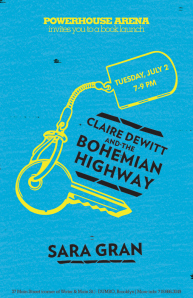 Claire DeWitt and the Bohemian Highway
by Sara Gran:
Claire DeWitt and the Bohemian Highway
by Sara Gran:
This might be the bleakest noir tale since Dope (2006), and Sara Gran wrote that one, too. Although the novel includes several intriguing sub-plots, the central mystery is the murder of Paul Casablancas, a musician Claire once dated, abandoned out of fear of intimacy, and still loves. She roams the seamy underworld of greater San Francisco searching for clues, abusing drugs, indiscriminately bedding casual acquaintances of both sexes, and mistreating her eager young assistant. Claire proclaims that she seeks truth, not justice, and in the end, she manages to achieve a measure of both — but only at great cost to herself and everyone around her. The result is a novel that is wise, chilling, and reeking with despair, yet written in such a beautiful, stunningly original style that it is impossible to resist. Gran takes the noir form to dark places rarely seen since Jim Thompson and David Goodis were writing more than a half-century ago.
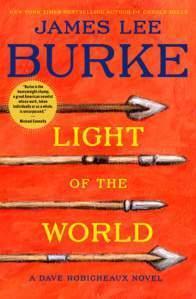 The Light of the World
by James Lee Burke:
The Light of the World
by James Lee Burke:
This novel finds Burke’s most popular protagonists, Iberia, Louisiana, Sheriff’s Deputy Dave Robicheaux and his menacing sidekick, Clete Purcel, vacationing in Montana with their grown daughters, Alafair and Gretchen. But when someone tries to kill Alafair with an arrow, it is apparent that trouble has followed them there. The themes in Burke’s lyrical, allegorical crime novels rarely change, but with each book written in his eighth decade, he delves more deeply into them, revealing both his growing despair over human nature and the American character and his unwillingness to abandon hope for redemption. Here, he returns to his themes of racism, the hijacking of Christianity by hateful bigots, and the nature of evil, asking us to consider whether its source is the Devil himself or men who, as he once put it, make “a conscious choice to erase God’s thumbprint from their souls.” Once again, Burke creates villains who view avarice as a virtue. Again, he demonstrates how easily they corrupt the police and politicians. As always, the law is corrupted and outgunned. As victims pile up, Dave, Clete, and their daughters recognize that if they want justice, they will have to get it for themselves. The result is perhaps Burke’s boldest and most complex novel to date, at once a superb crime story and a literary masterpiece from an author who has been named a Mystery Writers of America Grand Master.
The protagonist in Gordon’s debut novel, The Serialist (an Edgar Award finalist), was a novelist hired to write a serial killer’s memoir. Now he returns with the story of Sam Kornberg, an experimental novelist who finds work as an assistant to a obese and not entirely sane private detective. Gordon writes about writers because one of the things his books are about is the nature of storytelling itself. As the story opens, Sam is assigned the task of tailing a mysterious young woman. What seems at first to be a simple job soon snares him in a murder case that takes him on a wild ride from Los Angeles to a poor village in rural Mexico and involves Satanists, free love advocates, doppelgangers, and underground filmmakers. The result is a darkly comic, stylishly-written literary thriller peppered with references to literature ( Shakespeare, Phillip K. Dick, Proust, Kafka) and classic movies (Vertigo, The Wild Bunch, They Live By Night.) Along the way, Gordon explores issues of faith, personal identity, friendship, and the decline of civilization. Be forewarned that the author, whose previous jobs include writing for magazines with names like Hustler and Barely Legal, has included a fair amount of explicit sex.
As the story opens, Los Angeles Police Officer Scott James and his partner, Stephanie Anders, blunder into a back street where five masked men are raking a Bentley with automatic weapons. When the shooting stops, Stephanie lies dead in the street and Scott has been badly wounded. Meanwhile, in Iraq, an 85-pound German shepherd trained to sniff out explosives is wounded and her Marine handler killed by a suicide bomber. Months later, Scott and Maggie, both still recovering from their wounds, are united as a new team in the LAPD’s K-9 Platoon. In defiance of orders, they set out together to solve Stephanie’s murder. The most compelling passages in the novel describe the interactions between Scott and Maggie as they struggle to overcome their PTSD (yes, dogs get it, too); learn to trust, love, and rely on one another; and discover that each offers the other their best chance for a new start in life. Crais writes several chapters from Maggie’s point of view. “She had ranged ahead to protect him, but now her heart soared when Scott entered the room. They were pack. A pack of two, they were one.” This risky device would be a disaster in a lesser writer’s hands, but Crais, who did a lot of research about doggie behavior, pulls it off brilliantly. The result is a novel that is at once deeply touching and as action-packed as a Lethal Weapon movie.
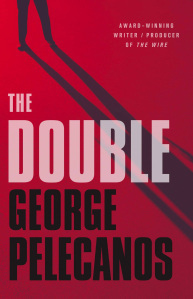 The Double
by George Pelecanos:
The Double
by George Pelecanos:
Spero Lucas, first introduced by George Pelecanos in The Cut (2011), is a Marine vet who saw action in Fallujah, returned to his hometown of Washington, D.C., and found part-time work as an investigator for a criminal defense attorney. On the side, he helps people recover stolen goods in return for a finder’s fee. Sometimes the work requires killing, and Spero, who still has nightmares about the war, is capable of doing that without remorse–most of the time. This sequel pits Spero against a gang of thieves led by a swaggering sociopath. To track them down, he leans on some old war buddies, but when the brutal confrontations come, he prefers to work alone. The Double, written in Pelecanos’s spare but vivid prose, is throwback, hardboiled story that will remind readers of the best of the Parker novels Donald Westlake produced under the pen name Richard Stark.
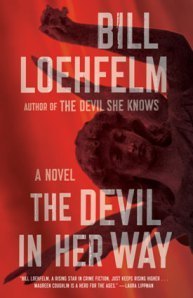 The Devil in Her Way
by Bill Loehfelm:
The Devil in Her Way
by Bill Loehfelm:
When Loehfelm first introduced Maureen Coughlin in The Devil She Knows (2011), the petite Staten Island, N.Y., cocktail waitress was drifting through life, fearful that she lacked the gumption to ever become anything more. But by the end of that novel, her confrontation with a vicious, mobbed-up politician had irrevocably changed her. Now, two years later, we find her living in New Orleans and freshly graduated from the city’s police academy. Responding to a routine disturbance, Maureen’s attention is drawn to a couple of young boys who seem unnaturally interested in the proceedings. As she tries to discover what they are up to, she uncovers a criminal conspiracy that threatens the boys’ lives–and also her own. Maureen’s inexperience gets her into trouble, but she’s spunky and eager to get on the fast track to the homicide division. Post-Katrina New Orleans, with its thriving French Quarter, its still-ruined neighborhoods, its scandal-riddled police force, and its often-obnoxious tourists, is so beautifully drawn that it emerges as a full-blown character in its own right. And as always in a Loehfelm novel, the prose is both taut and lyrical.
Jake Fisher and Natalie Avery fell in love at an artist’s colony in Vermont; but then she inexplicably broke it off, married an older man named Todd Sanderson, and made Jake promise he would never come looking for her. Todd ached for Natalie, but for six years, he kept his promise–until, one day, he stumbled onto Todd Sanderson’s obituary. So Jake, a political science professor at a small Massachusetts college, sets out to track Natalie down and promptly makes a series of frightening discoveries. Sanderson did not die of natural causes; he was tortured and murdered. And there is no trace of Natalie anywhere. The day she married Sanderson, she vanished from the face of the earth. Todd’s best bud urges him to forget Natalie and move on with his life, but he can’t let it go. Soon his persistence puts his own life in danger. Coben, the author of twenty-three thrillers, has long been a fixture on the best-seller lists, but Six Years is easily his most compelling and suspenseful novel to date. The prose is first rate. The characters, a remarkable collection of saints and sinners, are so well-drawn that that you can hear their hearts beating. And the plot has so many stunning surprises that it is impossible to put down.
The Downeast locals despise Elizabeth Morse, a woman who made a fortune selling worthless herbal remedies and is using it to buy up huge parcels of Maine woodland. The locals–timber barons, saw-mill workers, and poachers–have long made their livings from this land, but Morse hopes to persuade the federal government to turn it into a national park. So trouble is sure to come to this backwater of lakes and forests patrolled by Maine Game Warden Mike Bowditch, the hero of three earlier Doiron novels. It does so in the form of intruders who slip onto Morse’s property, shoot ten moose, and leave the carcasses for scavengers. Bowditch itches to dive into the investigation, but his boss, self-serving Lt. Rivard, keeps him on the periphery with make-work assignments. Trying to live down a reputation for insubordination, Bowditch seethes but follows orders for a time, but eventually he can’t resist sticking his nose where it does not belong. Doiron fashions a tense mystery peopled by characters you could meet by wandering into the wrong Down East bar. As usual, he peppers his story with evocative descriptions of the state he and Bowditch call home.
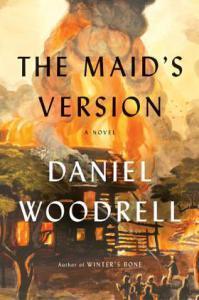 The Maid’s Version
by Daniel Woodrell:
The Maid’s Version
by Daniel Woodrell:
Six years after the publication of his much-celebrated eighth novel, Winter’s Bone, the poet laureate of country noir returns with a 164-page novelette that holds more truth and human emotion than most writers can pack into three times as many pages. The yarn was inspired by a true story, a West Plains, Missouri, dance hall explosion that killed dozens of young people in 1928. Growing up in the Ozarks, Woodrell heard the back-porch stories–whispers that the tragedy was no accident and that someone a member of his family once worked for might have been to blame. The author tells the tale through the memories of Alma DeGeer Dunahew, a bitter, vengeful, somewhat dotty old woman whose promiscuous sister died in the blast. Alma blames the tragedy on a banker whom she once worked for as a maid, but Woodrell offers up a host of other suspects including mobsters from St. Louis, a troupe of gypsies, and a preacher who considered the dance hall a den of iniquity. The complex, beautifully-written story unfolds as Alma gradually reveals facts, rumors, and suspicions to her grandson.
That makes ten, but I would be remiss If I did not also recommend:
 Broken Places by Ace Atkins — a fine addition to his outstanding Quinn Colson series.
Broken Places by Ace Atkins — a fine addition to his outstanding Quinn Colson series.
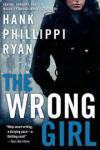 The Wrong Girl by Hank Phillippi Ryan — a heart-wrenching thriller from a writer who is acquiring a devoted following of discerning readers.
The Wrong Girl by Hank Phillippi Ryan — a heart-wrenching thriller from a writer who is acquiring a devoted following of discerning readers.
 How the Light Gets In by Louise Penny — a compelling story by a writer who has been garnering truck-loads of awards.
How the Light Gets In by Louise Penny — a compelling story by a writer who has been garnering truck-loads of awards.
 Little Elvises by Timothy Hallinan — another smart, funny novel in his Junior Bender series.
Little Elvises by Timothy Hallinan — another smart, funny novel in his Junior Bender series.
 Never Go Back by Lee Child — the best Jack Reacher novel yet by one of the genre’s most popular authors.
Never Go Back by Lee Child — the best Jack Reacher novel yet by one of the genre’s most popular authors.


December 2, 2013
The Cover of My New Mulligan Crime Novel
 Here’s the final cover art for my new crime novel, Providence Rag. It’s the third book in my Edgar Award-winning series featuring Liam Mulligan, an investigative reporter at a dying Providence, R.I. newspaper.
Here’s the final cover art for my new crime novel, Providence Rag. It’s the third book in my Edgar Award-winning series featuring Liam Mulligan, an investigative reporter at a dying Providence, R.I. newspaper.
The story is loosely inspired by one of the most notorious murder cases in Rhode Island history, the Craig Price murders in the 1980s. The book will be published on March 11 and can already be ordered on Amazon.com. Here’s the link.


October 11, 2013
Today’s Screed: Do We Have the Congress We Deserve?
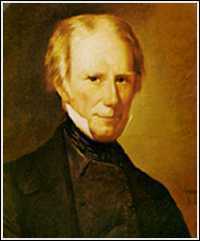
Henry Clay
Ever since the adoption of our Constitution, Americans have tended to view the Congress of the United States as a collection of knaves and fools; and inarguabley, both the Senate and the House have always had a great many of both. But among them, in every one of the 224 years since the Constitution bound us together, the Congress has also always been peopled, at least in part, by brilliant men. Men of vision and integrity who were willing, at least some of the time, to put the good of the nation before private gain and partisan advantage.
Except, perhaps, until now.
Take a moment to consider some of the remarkable people of every party who once sat in the seats now occupied by the likes of Ted Cruz, Louie Gomert, and Robert Mendez:
James Madis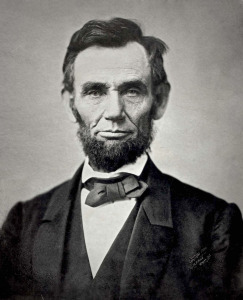 on. James Monroe. Henry Clay. Daniel Webster. Thomas Hart Benton. John Quincy Adams. Andrew Jackson. Charles Sumner. James K. Polk. Abraham Lincoln. Thaddeus Stevens. Edmund Ross. William Jennings Bryan. George Norris. Lyman Trumbull. William Borah. Robert LaFollette. Robert Taft. Arthur Vandenberg. Henry Cabot Lodge. Sam Rayburn. Margaret Chase Smith. Everett Dirksen. Wayne Morse. Daniel Patrick Moynihan. Ed Brooke. Lyndon Johnson, William Proxmire. Mo Udall. Howard Baker. George Mitchell. Edward M. Kennedy. Tip O’Neill. (For those of you keeping count, this off-the-top-of-my-head list holds 33 names, including 24 who have held office since the establishment of the modern party alignment in the late 1850s. Thirteen of the 24 were Republicans.)
on. James Monroe. Henry Clay. Daniel Webster. Thomas Hart Benton. John Quincy Adams. Andrew Jackson. Charles Sumner. James K. Polk. Abraham Lincoln. Thaddeus Stevens. Edmund Ross. William Jennings Bryan. George Norris. Lyman Trumbull. William Borah. Robert LaFollette. Robert Taft. Arthur Vandenberg. Henry Cabot Lodge. Sam Rayburn. Margaret Chase Smith. Everett Dirksen. Wayne Morse. Daniel Patrick Moynihan. Ed Brooke. Lyndon Johnson, William Proxmire. Mo Udall. Howard Baker. George Mitchell. Edward M. Kennedy. Tip O’Neill. (For those of you keeping count, this off-the-top-of-my-head list holds 33 names, including 24 who have held office since the establishment of the modern party alignment in the late 1850s. Thirteen of the 24 were Republicans.)
With a little research, my list of outstanding members of Congress could be greatly expanded; but for now, this should suffice to make my point. If you do not have an avid interest in U.S. history, some of the names here may be unfamiliar to you, but many should be well known to every American.
I’m not suggesting that there are no good men and women in Congress today. Surely there are some. Susan Collins, Ed Markey, and John McCain immediately come to mind. But can you conceive of any member of our current House and Senate earning a place on a future list of great legislators?
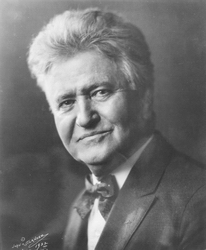
Robert LaFollette
Where are our great Senators and Congressmen now? Where is OUR Daniel Webster, Robert Lafollette, Margaret Chase Smith, or Tip O’Neill?
Recent polls show Congress with its lowest favorability rating since polling began. And this week’s NBC/Wall Street Journal poll shows the Republican Party with its lowest favorability rating ever thanks to the Republican House members’ antics over the government shutdown and the pending debt ceiling crisis. Although many Americans are notoriously uninformed — and misinformed — about government and politics, it’s hard to argue that these polling results have not been earned.
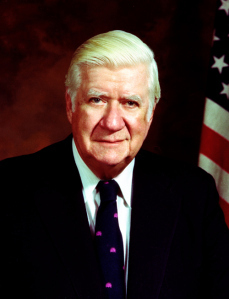
Tip O’Neill
America still produces great men and women, of course. They build innovative companies, serve in the military, teach our children, patrol our streets, heal the sick, and advance the boundaries of human knowledge. But if any of them are running for Congress, we are not electing them.
Much has gone wrong with America’s political system, starting with the way we have sat idly by and allowed vast sums of money to distort and corrupt our elections. But when it comes right down to it, we are the ones who vote — or choose to stay home on election day. We have no one to blame but ourselves.


October 10, 2013
“The Double” By George Pelecanos: My Review
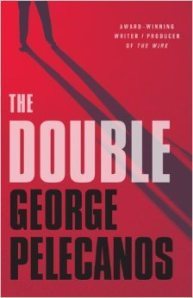 George Pelecanos has long been one of our finest crime novelists. His latest, The Double, is the second in his series featuring Spero Lucas, an Iraq War veteran turned Washington, D.C., private detective.
George Pelecanos has long been one of our finest crime novelists. His latest, The Double, is the second in his series featuring Spero Lucas, an Iraq War veteran turned Washington, D.C., private detective.
The book is a throwback, hardboiled story that will remind readers of the Parker novels that Donald Westlake published under the pen name Richard Stark.
For the full text of my Associated Press review of this fine novel, please click here.


“Rogue Island,” My First Novel, Now Available in French
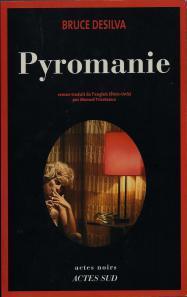 My Edgar Award-winning first novel, Rogue Island, is now available in a French edition.
My Edgar Award-winning first novel, Rogue Island, is now available in a French edition.
The French publisher, Actes Sud, changed the title to Pyromanie, which translates as Arson. The change was necessary because the original title was a pun on Rhode Island, and puns don’t translate.
I’m proud to say that my Mulligan crime novels have been published in ten foreign languages including Japanese, Spanish, Russian, and Korean.
The second novel, Cliff Walk, is now available in trade paperback, and the third, Providence Rag, will be published in the U.S. by Forge in March. I’m now writing the fourth, tentatively titled Providence Vipers.
Thanks to all my fans, from Maine to California and from Italy to Japan, for their continued support.


September 12, 2013
My Wife Patricia Smith Wins Top Poetry Honor
 My wife Patricia Smith has just been named the winner of the Lenore Marshall Poetry Prize for her latest book, Shoulda Been Jimi Savannah. This is highest award an American poet can win short of, perhaps, the Pulitzer
My wife Patricia Smith has just been named the winner of the Lenore Marshall Poetry Prize for her latest book, Shoulda Been Jimi Savannah. This is highest award an American poet can win short of, perhaps, the Pulitzer
“I can’t breathe,” Patricia said this morning. “Oxygen please.”
Me? Patricia has won so many honors that I’ve learned to take these things in stride. Every time she wins something — Pushcart prizes, the Rattle Poetry Prize, the National Poetry Series Award, the Phillis Wheatley Award, Yaddo and McDowell fellowships, and on it goes — I just figure, of course! That’s what’s supposed to happen when you’re a genius.
The Lenore Marshall prize, given by the Academy of American Poets, is in recognition of  the most outstanding book of poetry published in the United States in the previous year. It will be officially presented to Patricia at a ceremony in New York City on Oct. 25.
the most outstanding book of poetry published in the United States in the previous year. It will be officially presented to Patricia at a ceremony in New York City on Oct. 25.
Not bad for a poor kid from the west side of Chicago.


July 18, 2013
A Visit With the Great Howard Frank Mosher

Me and Howard Frank Mosher (r)
My wife Patricia Smith and I paid a visit to one of our favorite novelists, Howard Frank Mosher, at his rambling farmhouse in Vermont’s remote Northeast Kingdom this week. Howard and his wife Phillis were perfect hosts, treating us to a tour of the area, some excellent meals, and, best of all, two evenings of great conversation about storytelling, family, and the Boston Red Sox.
Howard also spun some great Northeast Kingdom lore, some of which is going to show up in his next novel.
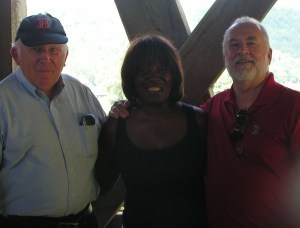
Howard (l) with my wife Patricia Smith and me
Previously we’d struck up an online friendship after Howard emailed me with unsolicited praise for my first crime novel, Rogue Island, but this was the first time we’d met face to face. I hope it will not be the last. Howard and Phillis are both incredibly well-read, and I was thrilled that they not only knew my work but could quote from my wife’s brilliant poetry. Howard even talked about my protagonist, Liam Mulligan as if he were alive and breathing — which to me he really is.
If you haven’t read Howard’s playful, lyrical novels — especially Waiting for Teddy Williams, you need to reassess your priorities. Howard’s the one in the ball cap.
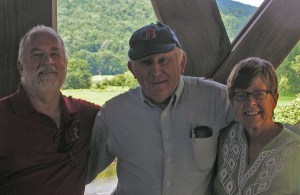
Me with Howard (center) and his lovely wife Phillis
You can learn more about Howard and his brilliant work here.
And you can find my Associated Press reviews of some of his novels here.
And here.
And here.



